Water Heater Temperature Dial Readings in Fahrenheit Robertshaw
Throughout the world, there are many different units of measuring temperature. The iii most of import ones are Fahrenheit (F), Kelvin (Chiliad), and Celsius (C).
Key Facts & Summary
- Celsius and Fahrenheit are degree scales. The degree symbol is not used to report temperature using the Kelvin scale, instead, they are noted as Kelvins.
- H2o boils at 100 degrees Celsius or 212 degrees Fahrenheit, or 373.fifteen Kelvins.
- Water freezes at 0 degrees Celsius or 32 Degrees Fahrenheit, or 273.15 Kelvins.
- Accented aught is 0 Kelvins. This is the everyman temperature whatever substance can drop down to.
- Celsius and Fahrenheit are the aforementioned at – twoscore degrees since the scales converge.
- Celsius and Kelvins become equal at loftier temperatures as the difference of 273.15 between them gets lost in the noise.
- 0 degrees Celsius is equal to 32 degrees Fahrenheit. The basic formula is (°C × 9/5) + 32 = °F.
- 0 degrees Celsius is equal to 273.15 Kelvins. The basic formula is °C + 273.15 = K.
- The bones formula for converting Fahrenheit into Celsius is (°F − 32) × 5/9 =°C.
- To convert Fahrenheit degrees into Kelvins, (°F − 32) × 5/9 + 273.15 =K.
- To convert Kelvins into Celsius degrees, the formula is K − 273.15 =°C, while the formula of converting Kelvins into Fahrenheit degrees is (1000 − 273.xv) × ix/five + 32 =°F.
- Temperature can exist simply defined as a measure of the hotness or coldness of an object.
- Temperature is measured using a thermometer – we find the effect of temperature on the substance inside it.
Temperature Conversion
Whether we utilize Celsius, Fahrenheit, or Kelvin in our efforts to measure temperatures, is not that important. However, if nosotros find ourselves in certain regions where the temperature measurement is different, knowing the differences between the three most used systems may come up in handy.
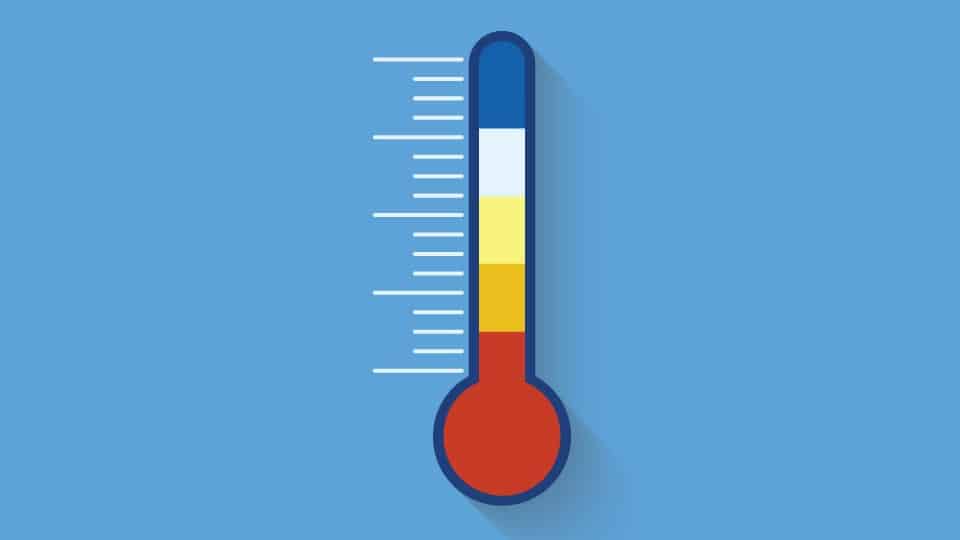
All three are correct ways of noting temperatures and they all can be derived from one another through formulas since they are related to each other.
But are these units of measurement any different from each other except for their different values? Aye and no, and here is a bit about every i of them.
Celsius
Too called centigrade, is a scale based on 0 degrees for the freezing point of water and 100 degrees for the humid point of water. This system was invented in 1742 by the Swedish astronomer Anders Celsius.
Some still call it the centigrade scale because of the 100-degree interval between the defined points. The Celsius scale is part of the metric arrangement and is used to measure the temperature in many countries.
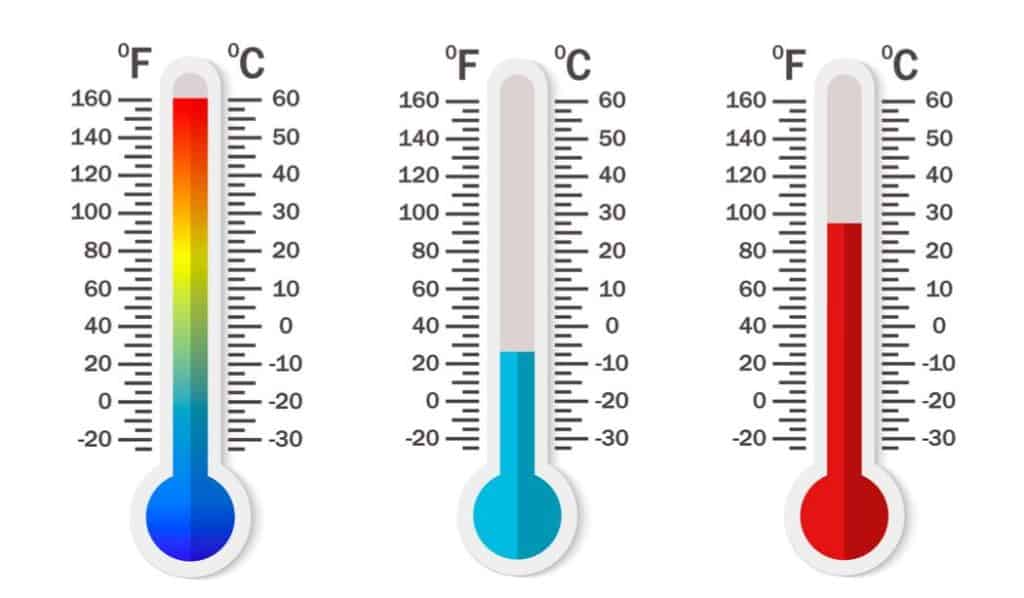
It is the easiest scale to use and though information technology is used throughout the world, there is one exception, the Usa. In the US, the Fahrenheit scale prevails only the Celsius scale is also non accepted in sure places where Kelvin is used.
The normal man torso temperature is32°C, and the absolute zero value is set at-273.15°C, on this calibration. To convert Celsius to Fahrenheit is pretty unproblematic:
°C to °F: Multiply by 9, so divide by 5 and and then add together 32.
Instance: How to convert 28°C to Fahrenheit (°F).
Offset footstep: 28°C × 9/5 = 252/5 = 50.iv.
2nd step: 50.4 + 32 = 82°F.
The Celsius scale and the Fahrenheit scale coincides at -forty°, which is the same for both. When it comes to converting Celsius degrees into Kelvins, the formula is even simpler.
0 degrees Celsius is equal to 273.15 Kelvins. The basic formula is °C + 273.15 = G. Kelvin to Celsius: Add 273.
Example: How to convert 28°C to Kelvin (One thousand).
First stride: 28°C + 273.15 = 301.15 Thousand
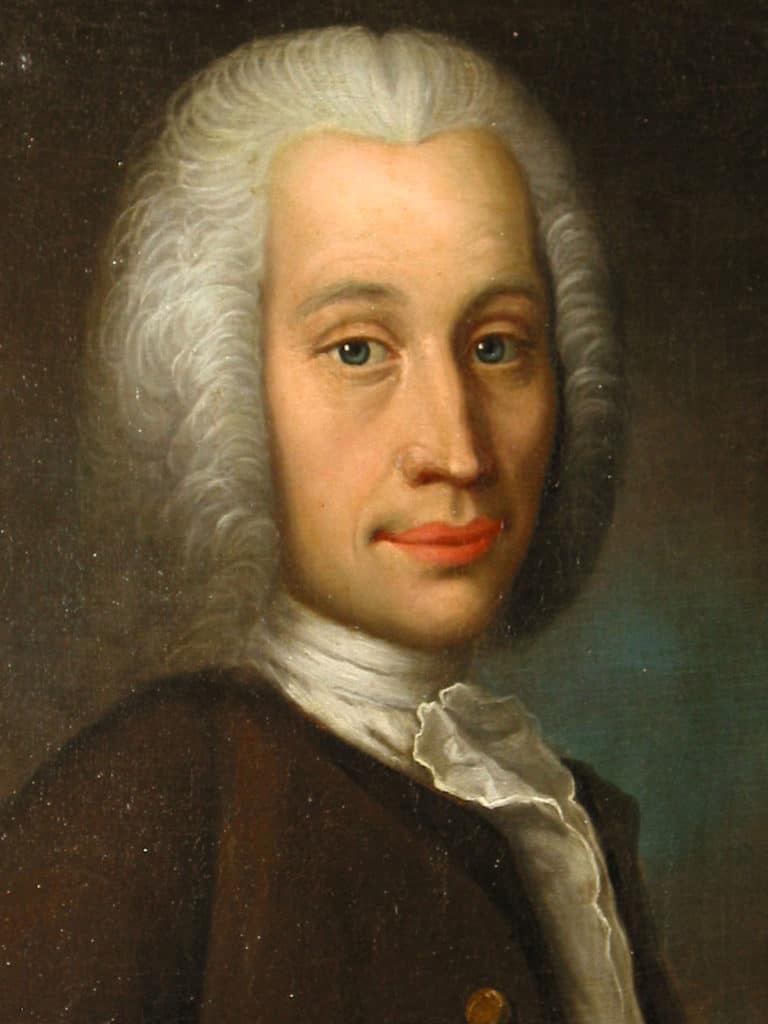
Fahrenheit
This temperature scale is based on 32 degrees for the freezing point of water, and 212 degrees for the boiling point. The interval between the ii points is divided into 180 equal parts.
The German physicist Daniel Gabriel Fahrenheit devised this calibration in 1724. The average human torso temperature is 98.6°F, while the absolute zilch is -459.67°F on this scale.
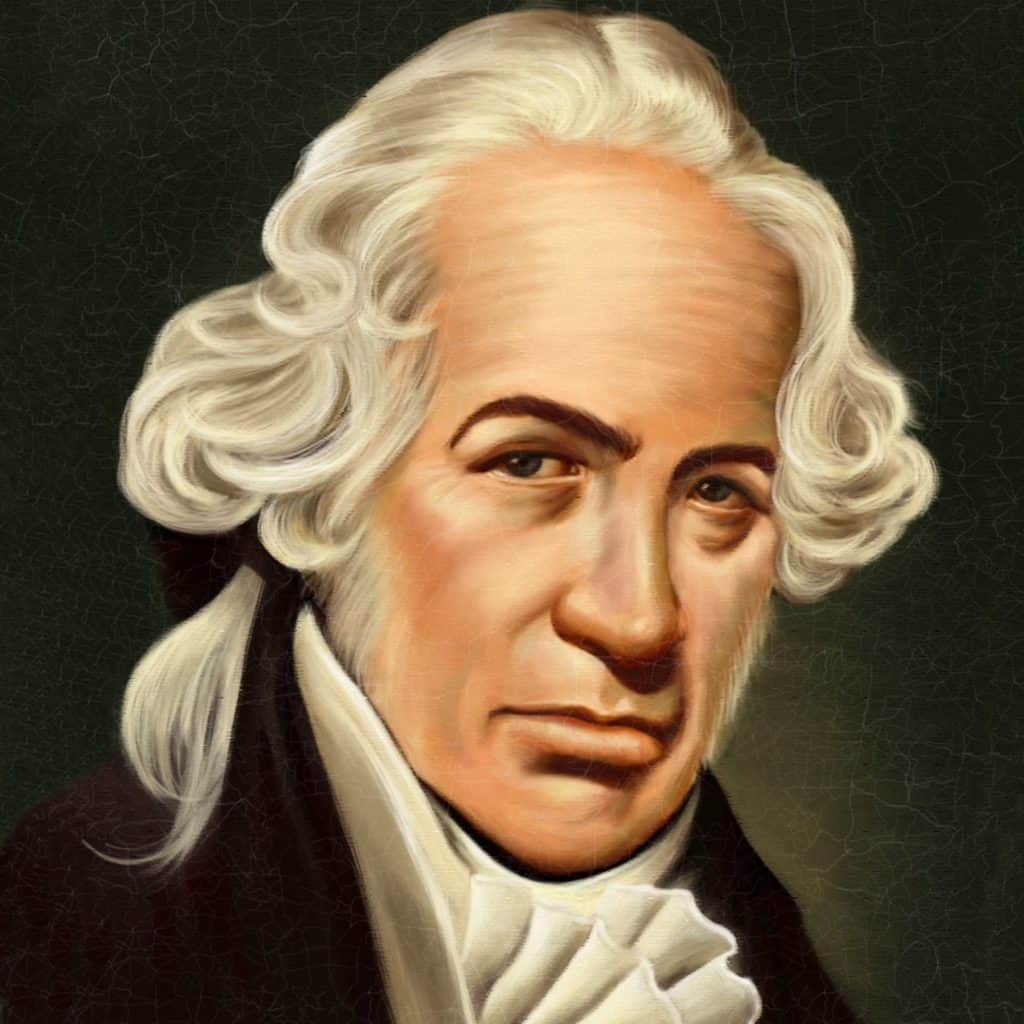
The Fahrenheit scale is accepted and is used in the United States and some of its territories. To convert Fahrenheit degrees into Celsius, hither is the formula:
°F to °C: Subtract 32, and then multiply by v, and so divide by nine. The bones formula is (°F – 32) × 5/9 = °C or precisely (F – 32)/1.8.
Case: How to convert 98.6° Fahrenheit into Celsius (°C)
Commencement step: 98.6°F – 32 = 66.6.
Second stride: 66.6 × 5/nine = 333/9 = 37°C.
When it comes to converting Fahrenheit degrees into Kelvins, the formula is even simpler.
Decrease 32, multiply past 5, carve up by 9, and then add 273.15.
(°F − 32) × five/9 + 273.15 =G.
Example: How to convert 98.6° Fahrenheit into Kelvin (K)
(98.6°F − 32) × 5/9 + 273.15 = 310.15Yard
Kelvin
This temperature scale is named later the British mathematician and physicist William Thomson Kelvin, who proposed it in 1848. It is an absolute temperature scale, having an accented nix below which temperatures do not exist.
Each unit on this calibration is called a Kelvin rather than a degree. For this reason, just the K, not the degree symbol °, is used when reporting temperatures in Kelvin. There are no negative numbers on the Kelvin scale, as the lowest number is 0 Chiliad.
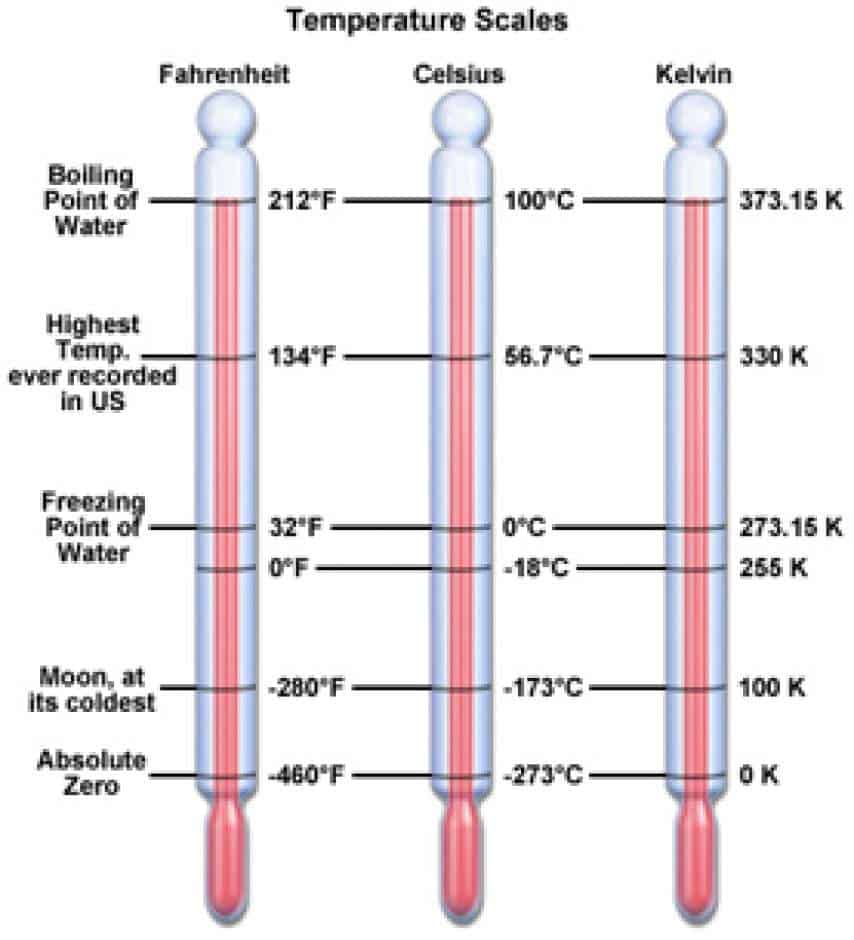
Absolute nada cannot technically be achieved. It is the temperature at which molecules would stop moving – it is thus "infinitely common cold."
The freezing indicate of water in Kelvin is 273.15K and 373.15K the boiling point. The idea for the Kelvin scale was sparked by a discovery in the 1800s of a relationship betwixt the volume and the temperature of a gas.
When information technology comes to the other scales, Kelvins and Celsius get equal at high temperatures equally the divergence of 273.xv between them gets lost in the noise.
To convert Kelvin into Celsius, the formula is quite simple.
M to °C: Add 273
K − 273.15 =°C
Example: How to convert 35°C into Kelvin (K)
35°C + 273.15 = 308.15Thou
To convert Kelvin into Fahrenheit, the formula is:
(K − 273.xv) × 9/5 + 32 =°F.
Subtract 273.15, multiply by i.8, then add together 32.
Example: How to convert 75°F into Kelvin (K)
(75°F − 32) × 5/9 + 273.15 = 297.0391000
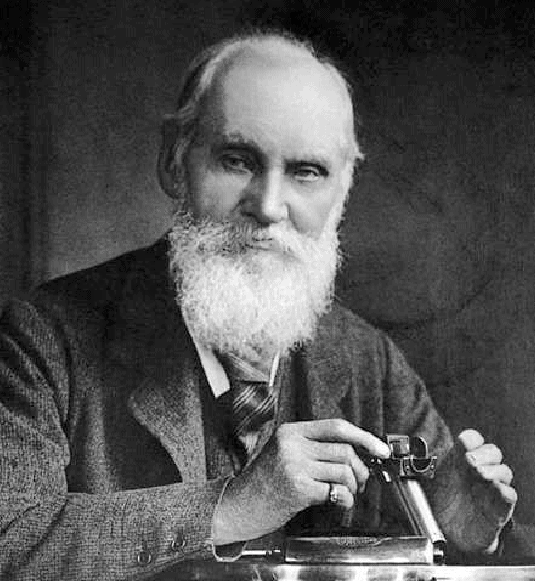
Fun Facts
- The hottest temperature recorded on Globe is 57.viii°C / 136°F, recorded in Al'Aziziyah, Lybia on September xiii, 1922.
- The coldest temperature recorded on Earth is -89.2°C / -128.6°F, recorded at Vostok Station, Antarctica on July 21, 1983.
- In the United states of america, one of the highest temperatures always recorded was 56.7°C / 134°F, recorded in Death Valley, California on July x, 1913.
- In New Zealand, the highest temperature recorded is 42.4°C / 108.3°F, recorded in both Rangiora and Marlborough on February 7, 1973.
- In Africa, the lowest temperature ever recorded is -24°C / -11°F, recorded in Ifrane, Morocco on February 11, 1935.
- The inventor of the Kelvin scale also wrote the second law of thermodynamics, which states that heat will non menses from a colder trunk to a hotter torso.
Conversion Formulas
- Kelvin to Fahrenheit: Subtract 273.15, multiply by 1.8, then add 32
- Fahrenheit to Kelvin: Subtract 32, multiply by 5, divide by 9, then add 273.xv
- Kelvin to Celsius: Add 273
- Celsius to Kelvin: Subtract 273
- Fahrenheit to Celsius: Subtract 32, multiply by v, then separate by 9
- Celsius to Fahrenheit: Multiply by 9, separate past 5, then add 32
Trivia
Mercury thermometers
Not too long ago, thermometers had mercury inside the glass. If the temperature got hotter, the mercury expanded and moved upwardly through the narrow tube.
Nosotros could come across what the temperature was by reading it off the calibration of numbers on the tube. However, mercury is very toxic and it was soon replaced with different liquids.
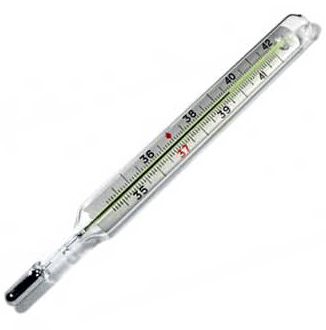
The concept remains the same regardless, as the temperature goes upwards, the liquid expands and rises, and when the temperature goes down, the liquid shrinks and drops down the tube.
Did you know?
- The Kelvin calibration isn't the only absolute temperature scale. At that place is also the Rankine temperature scale. Information technology is used more often than not by engineers.
- It is unknown if Daniel Gabriel Fahrenheit was a freemason, still, many believe that he was considering there are 32 degrees of enlightenment, and he chose to use 32 as the melting temperature of the water in his scale.
- Anders Celsius invented his temperature scale in 1742 using the mercury thermometer.
Sources:
- Unit Converter Bot
- Biodifferences
- Unit Converter
- LiveScience
- Britannica
- Wikipedia
Image sources:
- https://static.bhphotovideo.com/explora/sites/default/files/styles/top_shot/public/Color-Temperature.jpg?itok=yHYqoXAf
- https://www.worldatlas.com/r/w1200-h701-c1200x701/upload/0c/ce/3f/shutterstock-618369506.jpg
- https://res.cloudinary.com/dk-find-out/paradigm/upload/q_80,w_1920,f_auto/A-Carolina-Pontes-Daniel-Fahrenheit_zljtwo.jpg
- https://nationalmaglab.org/media/k2/items/cache/72d71c3e1a75301c5a2942cd172af179_L.jpg
- https://www.researchgate.cyberspace/profile/Augusto_Belendez2/publication/237266333/figure/fig21/Equally:647921112449027@1531487839191/Figura-31-William-Thomson-Lord-Kelvin-desde-1892-18241907.png
- https://upload.wikimedia.org/wikipedia/commons/thumb/b/b1/Anders-Celsius-Head.jpg/1200px-Anders-Celsius-Caput.jpg
- https://images.squarespace-cdn.com/content/5a9762f0b98a78c859db8f5e/1552325547898-ERZ1ED821S61UJ0HTZ8Q/Screen+Shot+2019-03-eleven+at+12.32.23+PM.png?content-type=image%2Fpng
Source: https://nineplanets.org/kids/temperature-conversion/
Enviar um comentário for "Water Heater Temperature Dial Readings in Fahrenheit Robertshaw"